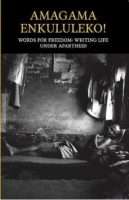P.W. Botha, the Apartheid leader at the time, explained the internal and external opposition by saying that South Africa was facing a ‘total onslaught’. This meant that it was being attacked on all sides. He argued that the revolutionaries in South Africa were acting on behalf of the Soviet Union and trying to spread communism, turning South Africa into a battlefield of the Cold War. This was used as a way of ignoring protesters’ claims for democracy and rights. In response, he argued for a ‘Total Strategy’ that included putting down uprisings, and looking at the reasons for unrest.
What this meant in practice was a mixture of reform and repression. Under the guise of ‘Total Strategy’, the South African army went on raids across the border, attacking ANC strongholds. They continued to fight against Namibian independence, and tried to destabilise neighbouring countries who opposed Apartheid by supporting rebels in civil wars against the new governments of independent Mozambique and Angola. Protest within South Africa continued to be met with arrests, bannings, and state-sponsored violence. Meanwhile, the government secretly began to work ever more closely with the KwaZulu leader Mangosuthu Buthelezi, in an effort to build a black political force that could counter the mass democratic movement.
In addition, the government began to reform: trying to take away reasons for unrest by making some changes to Apartheid, but with the aim of protecting white political and economic control. Legalising black trade unions and encouraging a black urban middle class, explained earlier, were the first part of these changes. It was hoped that greater class divisions within the black population would weaken resistance. Some of petty Apartheid was also done away with – during the 1980s public facilities started to open their doors to all races. In 1986 passes were finally scrapped.
An important part of the new reforms was the new ‘Tricameral’ Constitution of 1983. This would allow Coloured and Indian people to vote for representatives, each in their own house of parliament (in addition to the white house of parliament). Each house would theoretically control its own affairs. But in practice, the white parliament and president controlled things. There was no real power-sharing. Again, this was an attempt to draw people into working with Apartheid, to make it look like there was democracy, and to divide resistance by giving Coloured and Indian people privileges that black people did not have. Africans did not get a house of parliament. They were supposed to have political representation in the Homelands. The government also tried to set up Black Local Authorities, or Township Councils, as a form of local government.
In 1983 over 400 organisations came together to form the United Democratic Front (UDF). This was an umbrella anti-Apartheid body, and it included religious groups, community organisations, trade unions and student movements. Although the groups and people aligned to the UDF often differed with respect to the strategy they took, they all accepted the Freedom Charter, which meant they were aligned with the ANC (and often became the ANC on the ground). The National Forum (NF) was another umbrella political movement, but with a Black Consciousness and worker-focused ideology. It was only in the Cape that the NF had a support base to rival the UDF’s.
The first issue the UDF faced was the Tricameral Constitution.
A campaign was organised to boycott the elections for the new Coloured and Indian parliaments. This was a huge success. Almost no-one voted. The same thing happened in the township council elections. The message was clear: people saw the reforms for what they were – a sham – and would not work with the Apartheid state. It was also obvious that the government could not be trusted to reform while it was still brutally crushing resistance and protest.
The structure of the UDF meant that the central leadership was not always in control of what each organisation under it did. But it did allow the struggle to draw in and mobilise a lot of people at the grassroots level, and linked local campaigns, like bus boycotts, school protests and worker stayaways, to a bigger national movement. In late 1984 rent boycotts started in the Vaal Triangle, spreading through the Transvaal and then across the country. These turned into bigger rebellions, with protesters attacking government buildings, police stations, beerhalls and councillors (who were seen as collaborators) in townships. Politicisation and protest even spread to small towns and rural areas which had previously been quiet. The UDF set up branches in Homelands such as Lebowa and KwaNdebele. With the massive poverty, unemployment, malnutrition and other poor conditions, Homelands had many reasons to protest. People rebelled against the undemocratic Bantustan rulers and in some cases managed to overthrow them, despite violent backlash from security forces. Some communities also took up the generations-old fight to get back land which had been taken from them during Apartheid or earlier. Meanwhile, MK attacks increased.


